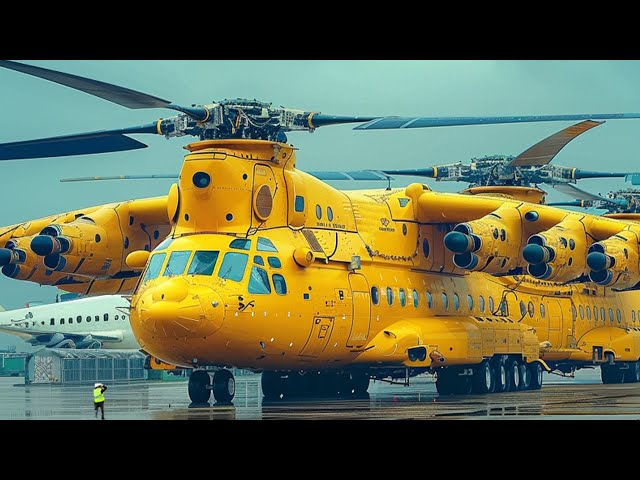The Race to Build the Biggest Airplane
The quest to create the largest airplane has been a monumental challenge that has captured the imagination of engineers, aviators, and the public alike. Over decades, aerospace engineers have pushed the boundaries of technology, materials, and design to create aircraft that can carry more passengers and cargo across greater distances. The biggest airplane serves not only as a technical marvel but also as a symbol of human ingenuity and ambition.
The Antonov An-225 Mriya: The Titan of the Skies
The Antonov An-225 Mriya holds the title for the largest airplane in the world. Designed by the Antonov Design Bureau in Ukraine, the An-225 was originally created to transport the Soviet Buran space shuttle. The An-225 first took to the skies on December 21, 1988, and it has retained its record-breaking status ever since.
Specifications of the Antonov An-225 Mriya:
| Specification | Details |
|---|---|
| Wingspan | 88.4 meters (290 feet) |
| Length | 84 meters (275.6 feet) |
| Height | 18.1 meters (59.3 feet) |
| Maximum Takeoff Weight | 640,000 kg (1,410,958 lbs) |
| Payload | 250,000 kg (551,156 lbs) |
| Engines | 6x Progress D-18T turbofans |
The aircraft’s colossal size allows it to transport oversized cargo that would be impossible for other airplanes. Its spacious cargo hold spans 43 meters in length, 6.4 meters in width, and 4.4 meters in height, providing an unparalleled capability in logistics and heavy-lifting operations.
Interesting Facts About the Antonov An-225 Mriya:
- The aircraft is so large that it requires a crew of six, including pilots, engineers, and loadmasters.
- It holds over 240 records in aviation, including the highest weight ever lifted on an airplane.
- The An-225 was initially conceived to carry the Buran space shuttle on its back, similar to how the Boeing 747 carried the Space Shuttle.
- Only one An-225 was ever completed, although plans for a second variant exist.
The Stratolaunch: Reaching New Heights
Another colossal airplane making waves in the aviation industry is the Stratolaunch, built by Stratolaunch Systems. Launched in 2019, this aircraft surpassed the An-225 in terms of wingspan, making it the largest wingspan of any aircraft ever built.
Specifications of the Stratolaunch:
| Specification | Details |
|---|---|
| Wingspan | 117 meters (385 feet) |
| Length | 73 meters (238 feet) |
| Height | 15.24 meters (50 feet) |
| Maximum Takeoff Weight | 590,000 kg (1,300,000 lbs) |
| Payload | 250,000 kg (551,156 lbs) |
| Engines | 6x Pratt & Whitney PW4056 turbofans |
Stratolaunch is designed to function as an airborne launch platform for rockets. This unique approach allows payloads to be launched into space from high altitudes, providing more flexibility and reducing the need for large ground-based launch facilities.
Interesting Facts About Stratolaunch:
- Its twin-fuselage design is distinctive, allowing for more stability and control during flight.
- The aircraft can take off and land on a runway that is only 3.7 kilometers long.
- It aims to simplify the process of space launches and lower the cost per launch.
- Stratolaunch was founded by Paul G. Allen, co-founder of Microsoft.
The Airbus A380: A Giant in Passenger Transport
While the Antonov An-225 and Stratolaunch serve specialized purposes, the Airbus A380 stands as the largest passenger airplane. Entering commercial service in 2007, the A380 has been a game-changer for international travel.
Specifications of the Airbus A380:
| Specification | Details |
|---|---|
| Wingspan | 79.75 meters (261.8 feet) |
| Length | 72.72 meters (238.6 feet) |
| Height | 24.09 meters (79 feet) |
| Maximum Takeoff Weight | 1,260,000 lbs (560,000 kg) |
| Seating capacity | 555 in 3-class configuration, up to 853 in all-economy |
Designed for comfort and efficiency, the A380 offers passengers an unparalleled flying experience. Amenities often include spacious seating, high ceilings, and luxurious first-class suites.
Interesting Facts About the Airbus A380:
- The A380 can fly approximately 8,000 nautical miles on a single tank, making it ideal for long-haul flights.
- It is capable of carrying more passengers than any other airplane, reducing congestion at major airports.
- The A380’s assembly takes place in different countries, with parts being manufactured in France, Germany, Spain, the UK, and other locations before final assembly in Toulouse, France.
- Some airlines have customized their A380s to include on-board showers, bars, and lounges.
The Boeing 747-8: The Queen of the Skies
Before the A380, the Boeing 747 was the undisputed giant of the sky. The 747-8 is the latest and largest variant of Boeing’s iconic 747 series. It first came into commercial service in 2012 and boasts impressive capabilities.
Specifications of the Boeing 747-8:
| Specification | Details |
|---|---|
| Wingspan | 68.4 meters (224.6 feet) |
| Length | 76.3 meters (250.2 feet) |
| Height | 19.4 meters (63.1 feet) |
| Maximum Takeoff Weight | 987,000 lbs (447,700 kg) |
| Seating capacity | 467 in 3-class configuration |
The Boeing 747-8 serves both as a passenger aircraft (747-8i) and a freighter (747-8F), contributing enormously to global commerce and travel.
Interesting Facts About the Boeing 747-8:
- The aircraft is often referred to as the “Queen of the Skies” due to its longstanding dominance and unique hump design.
- A 747-8 has flown the longest non-stop commercial flight, covering 14,700 kilometers.
- It is known for its distinctive hump, which allows it to carry both passengers and cargo.
- The 747-8 is powered by four advanced GEnx-2B67 engines, providing better fuel efficiency compared to earlier models.
Final Thoughts
The continuous evolution in producing the world’s largest airplanes showcases remarkable advancements in aerospace engineering. From the Antonov An-225’s record-breaking payload capacities to the innovative Stratolaunch and the luxurious passenger experiences in the Airbus A380 and Boeing 747-8, these giants of the sky not only reflect technological prowess but also contribute immensely to global connectivity, commerce, and space exploration.









